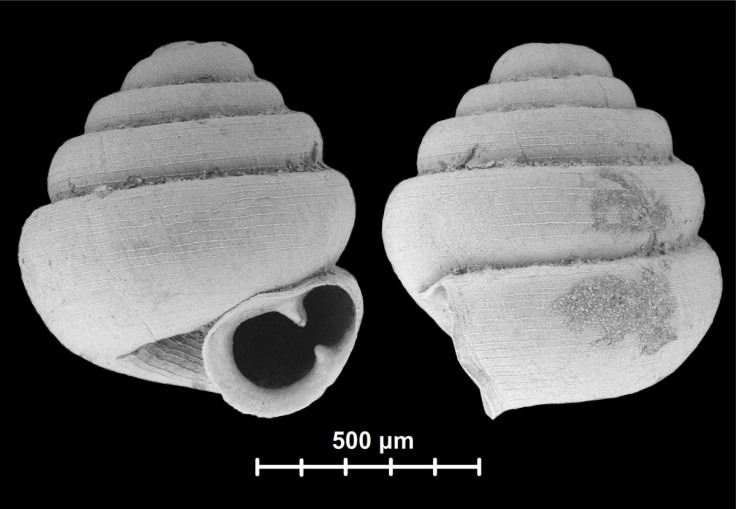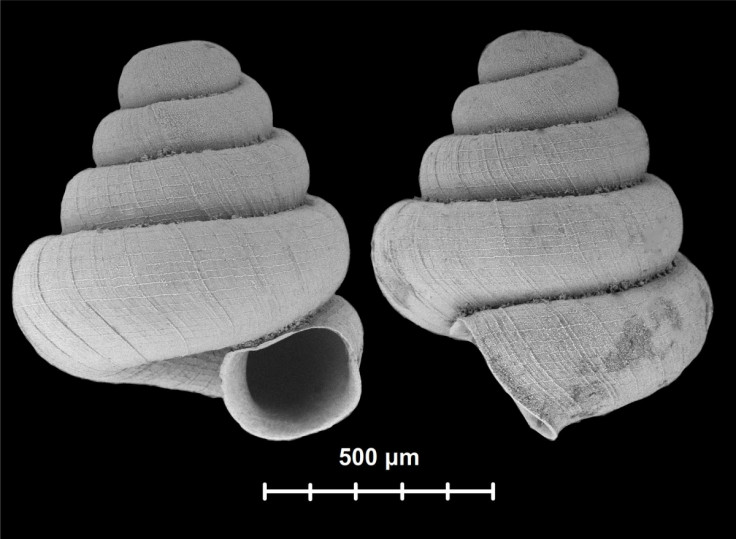Tiny snail that fits into eye of needle 10 times is world's smallest land species [Photos]
A teeny tiny snail that can fit into the eye of a needle 10 times over is possibly the world's smallest ever discovered. The shell of Angustopila dominikae measures less than a millimetre in height and is one of several microsnails described by scientists in the journal ZooKeys.
The team made the discovery while examining soil samples from the base of limestone rocks in Guangxi Province, Southern China. They found seven empty light grey shells measuring less than a millimetre, with the smallest (Angustopila dominikae) being just 0.86mm in height.
This miniscule size means it may well be considered the world's smallest land snail species when looking at diameter. Another species, Angustopila subelevata, was found to measure 0.87mm in height.

The term "microsnail" normally refers to species that have shells smaller than five millimetres. The smallest recorded snails are marine species, with the tiniest recorded being Ammonicera minortalis – which ranges from between 0.32mm to 0.46mm. On land, there are just a few measuring smaller than 1.5mm.
"Extremes in body size of organisms not only attract attention from the public, but also incite interest regarding their adaptation to their environment," the researchers said. "Investigating tiny-shelled land snails is important for assessing biodiversity and natural history as well as for establishing the foundation for studying the evolution of dwarfism in invertebrate animals."

Little is known about microsnails and there are very few reported cases where the shells are this small. In the study, the authors said one of the difficulties in examine such species is finding living specimens.
The scientists, from the Shinshu University in Japan and the University and Natural History Museum of Bern in Switzerland, said because of the lack of samples, the evolutionary relationships between the species and indeed how many species there are is unknown.
They said: "The present data are insufficient for addressing the evolutionary processes of miniaturisation in land snails. However, we hope that these results provide the taxonomic groundwork for future studies concerning the evolution of dwarfism in invertebrates."
© Copyright IBTimes 2025. All rights reserved.






















